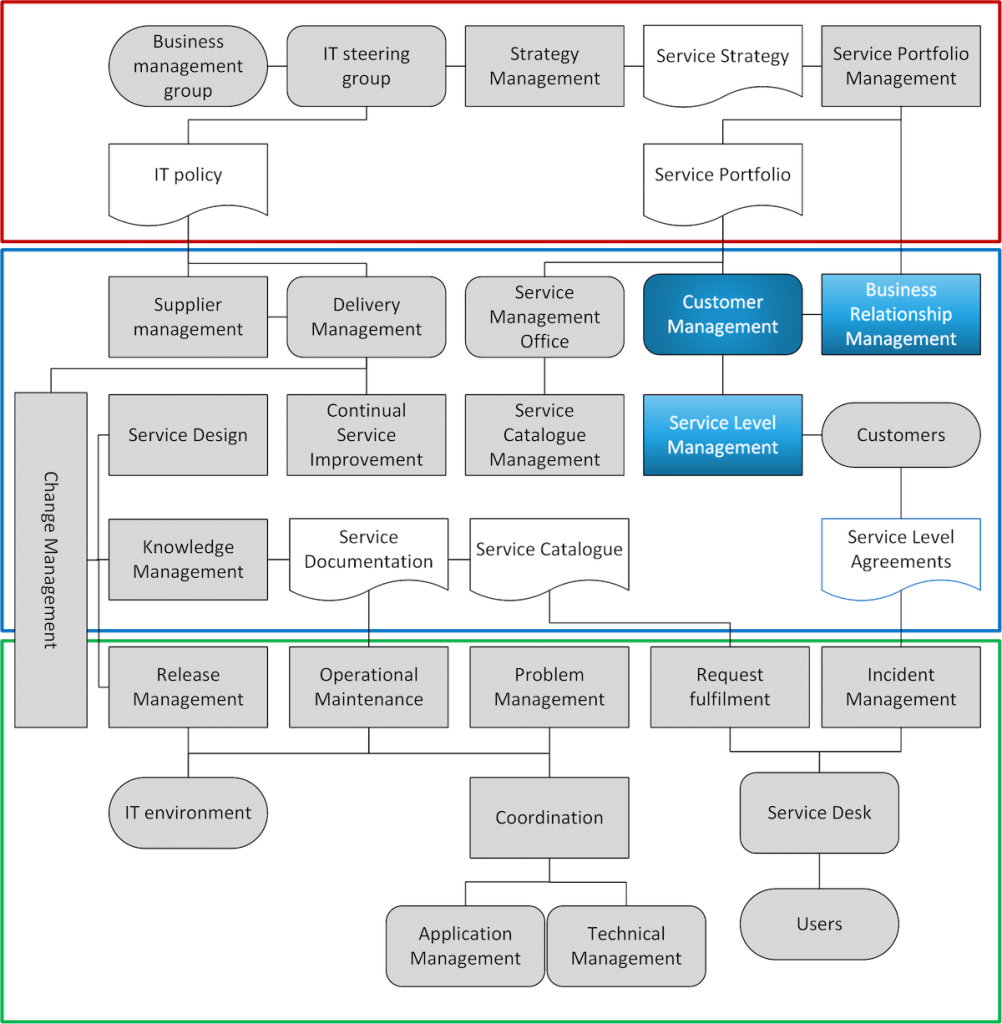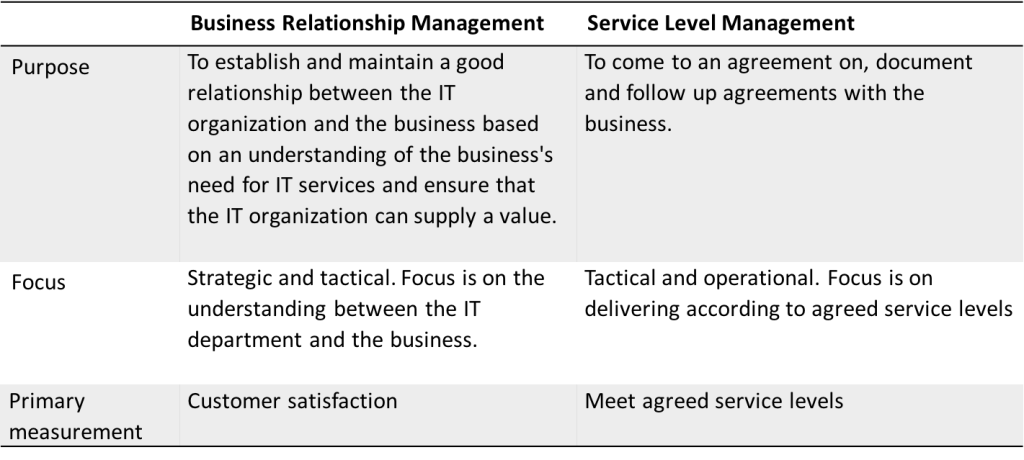Many companies and organizations view IT as a cost. In an economic calculation there is only one thing to do with costs, reduce them. This is based on the fact that the business does not perceive the connection between the IT services and the value they provide. IT has no intrinsic value; the value is created through something in the business becoming simpler or cheaper to perform. If there is no clear connection between an IT service and what is made more efficient in the business, then IT is perceived as a cost.
The aim of this phase is to understand the business’s requirements and at the same time to create understanding in the business for the value which the IT services provide. This is one of the fundamental aspects in the creation of an IT department that is regarded as an asset for the business.
Scope
Relations comprises dialogue with the business. One of the most important parts of the dialogue is to understand the business’s problems and how IT can contribute to minimizing them. Relations should also understand the business’s plans and the forthcoming need of IT services.
In addition, it includes agreeing on service levels and content in the delivery for each part of the business. These agreements should be measured and reported at regular meetings.
Overall flow through Relations
Relations is focused on converting the business’s requirements into IT services, which means that the bulk of the inputs come from the business and outputs are targeted at the Delivery Management function at tactical level.
Inputs to the phase:
- Relations receives requirements and requests from the business (the customers) for new or changed IT services and also information about future activities which will affect the IT delivery
- The service catalogue defines what should be delivered to the business, which sets the parameters for agreements
Outputs from the phase:
- New requirements and requests to Service Portfolio Management
- Knowledge about the business to Strategy Production and the IT Steering Group
- Improvement proposals which concern production of IT services to Delivery Management
- Agreements with the business

BRM vs SLM
Relations comprises two similar processes which are sometimes performed by the same role. The table below explains the fundamental differences between these processes.


